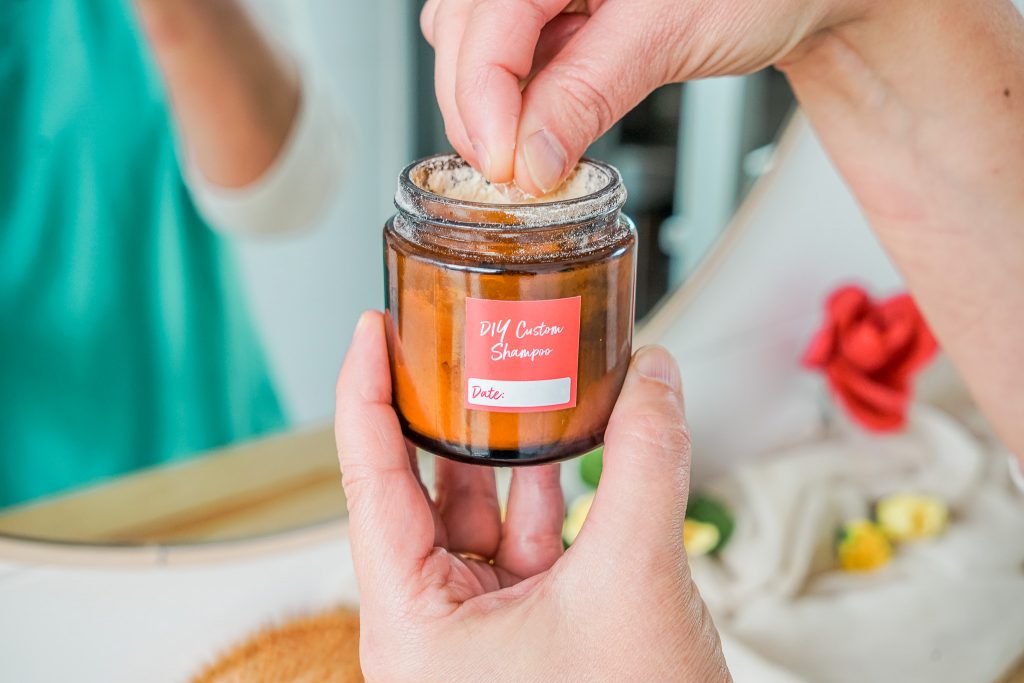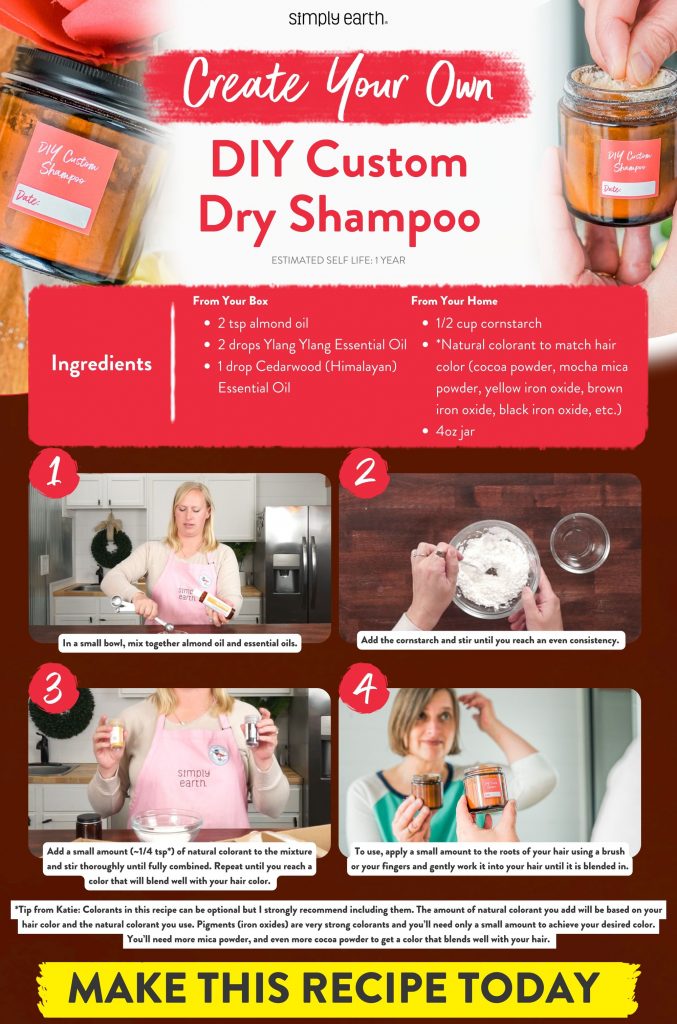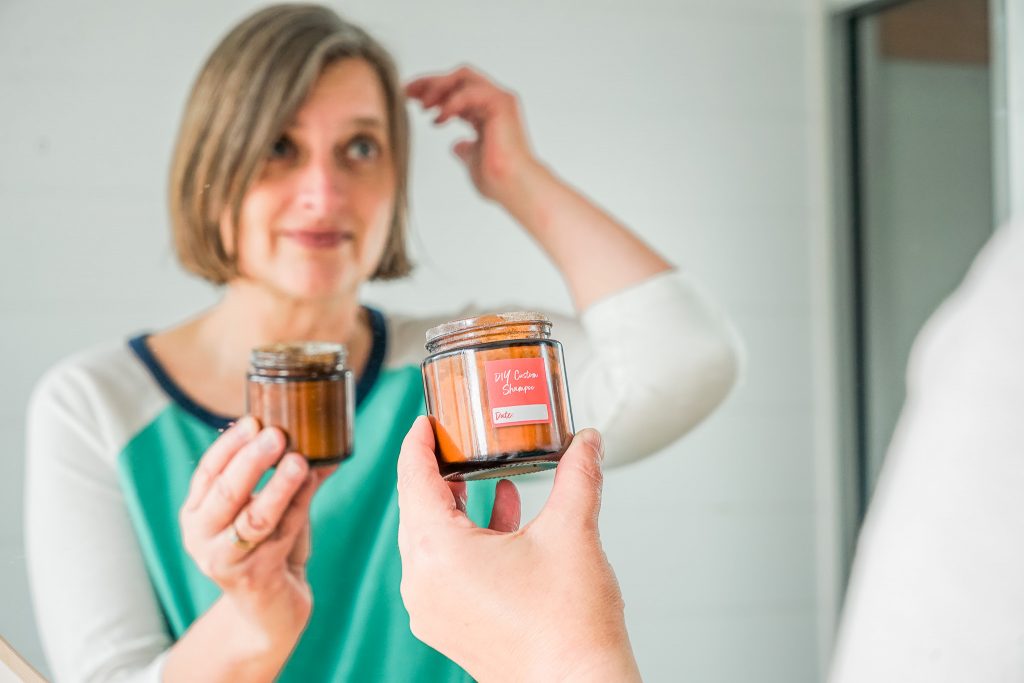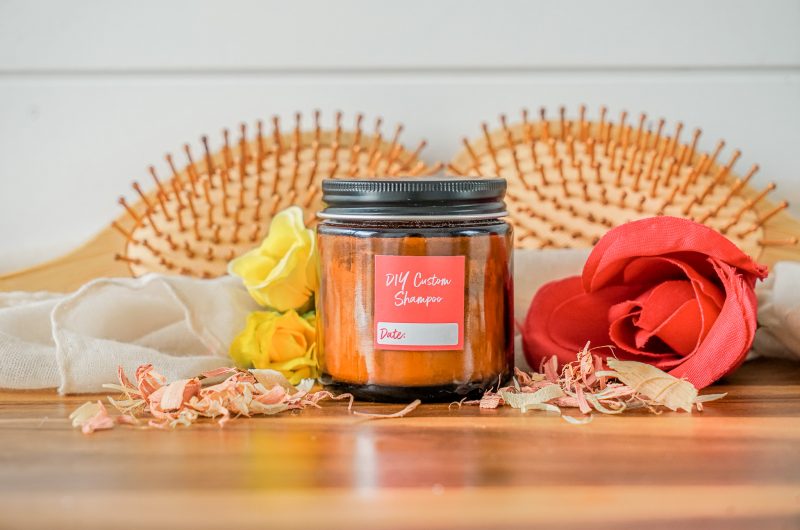Discover the secret to reviving your hair on non-wash days with our simple, customizable DIY dry shampoo recipe!
In today’s fast-paced world, where every minute counts, dry shampoo has emerged as a lifesaver for many of us, helping us keep our hair fresh and voluminous on the go. But why break the bank for something you can easily and affordably make at home? You’d be surprised to learn that many store-bought natural dry shampoos are crafted from simple, everyday ingredients that are likely in your kitchen right now. This DIY Custom Dry Shampoo recipe saves money and allows you to customize the scent according to your preferences. Get ready to transform your hair care routine with this simple, cost-effective solution!
What’s in This Dry Shampoo Recipe?

Almond Oil
Almond Oil is the perfect carrier oil for this dry shampoo recipe. It is primarily used to dilute essential oils and facilitate their application to the hair and scalp. Rich in Vitamin E, almond oil not only aids in incorporating the essential oils evenly throughout the mixture but also offers additional nourishment to your hair.
Cornstarch
Cornstarch is the key ingredient in this dry shampoo recipe, designed to absorb the excess oils on our scalp, keeping hair looking fresh and less greasy between washes. Arrowroot powder is an excellent substitute with similar oil-absorbing properties for those looking for alternatives or aiming to enhance the formula. Additionally, for a touch of natural benefits, consider swapping a portion of the cornstarch for some of Simply Earth’s Rose Kaolin Clay if you have it on hand. This adjustment maintains the oil-absorption quality and adds a gentle detoxifying effect to your homemade dry shampoo.
Natural Colorant
The role of a natural colorant in this DIY dry shampoo recipe is critical for ensuring that the mixture blends seamlessly with your hair color, creating a natural and invisible finish. Achieving a perfect match to your hair color isn’t necessary; the goal is to approximate the shade closely enough that the dry shampoo is undetectable after application. The quantity of natural colorant needed will vary based on your hair color and the type of natural colorant you choose. A general guideline for those opting for pigment powders is to start with approximately 1/4 to 1 teaspoon of the powder. However, if you’re leaning towards using cocoa powder – an excellent choice for brunettes – you’ll likely need at least 1 tablespoon or more to match your hair color. Experiment with these measurements to find the perfect balance for your hair shade.
Ylang Ylang Essential Oil
Ylang Ylang Essential Oil is a luxurious addition to our dry shampoo recipe. Its sweet, floral aroma invigorates the senses and soothes the scalp. Known for its uplifting effects, Ylang Ylang can enhance your mood, boosting positivity with every application.
Cedarwood (Himalayan) Essential Oil
Cedarwood (Himalayan) Essential Oil introduces a dry, woody aroma that complements the sweet floral scent of Ylang Ylang, creating a balanced fragrance profile for our DIY dry shampoo. Including Cedarwood in your dry shampoo enhances the product’s aroma and transforms your hair care routine into a more tranquil experience.

Things to Remember When Using This Recipe

Always dilute an essential oil when using it on the skin. This essential oil recipe is unlikely to cause skin irritation when diluted properly. If the oil has oxidized (been left with the cap off for long periods of time), it is more likely to cause skin irritation. Check out this dilution chart for diluting this essential oil properly.

If you are pregnant, consult your doctor prior to use.

This essential oil recipe is safe to use with kids aged 10+.

Cats may find this recipe irritating. For more information on using essential oils with cats, check out this blog post.

Dogs may find this recipe irritating. For more information on using essential oils with dogs, check out this blog post.
We don’t recommend ingesting essential oils unless under the direction of a doctor certified in aromatherapy. For more information on why we don’t ingest essential oils check out this blog post.
Please note: This post is a compilation of suggestions made by those that have extensively used essential oils and has not been verified scientifically with clinical tests nor reviewed by medical experts. It is anecdotal information and should be treated as such. For serious medical concerns, please consult your doctor. The statements given in this blog post have not been verified by the FDA
DIY Custom Dry Shampoo Recipe
DIY Custom Dry Shampoo Recipe
Time: 5 mins
Shelf Life: 1 year
Yield: 4oz
Ingredients
- FROM YOUR BOX
2 tsp almond oil
2 drops Ylang Ylang Essential Oil
1 drop Cedarwood (Himalayan) Essential Oil
- FROM YOUR HOME
1/2 cup cornstarch
Natural colorant to match hair color (cocoa powder, mocha mica powder, yellow iron oxide, brown iron oxide, black iron oxide, etc.) 🛒
4oz jar 🛒
Directions
- In a small bowl, mix almond oil and essential oils.
- Add the cornstarch and stir until you reach an even consistency.
- Add a small amount (~1/4 tsp*) of natural colorant to the mixture and stir thoroughly until fully combined. Repeat until you reach a color that will blend well with your hair color.
TIP FROM KATIE
- Colorants in this recipe can be optional, but I strongly recommend including them. The amount of natural colorant you add will be based on your hair color and the natural colorant you use. Pigments (iron oxides) are very strong colorants; you’ll need only a small amount to achieve your desired color. You’ll need more mica powder and even more cocoa powder to get a color that blends well with your hair.
Customizing Your DIY Dry Shampoo For Your Hair Color

- You don’t have to perfectly match your hair color for this dry shampoo to blend well into your hair. You just want to get a color relatively close to your hair color.
- To get a color that blends in well with Katie’s light hair, use 1/2 tsp yellow iron oxide. For Shilah’s dark hair, use 1/4 tsp black mica powder and 1/2 tsp brown iron oxide.
- Pigment powder tends to clump. To achieve a more even color, I use a silicon spatula to help smush up the clumps as I stir.


